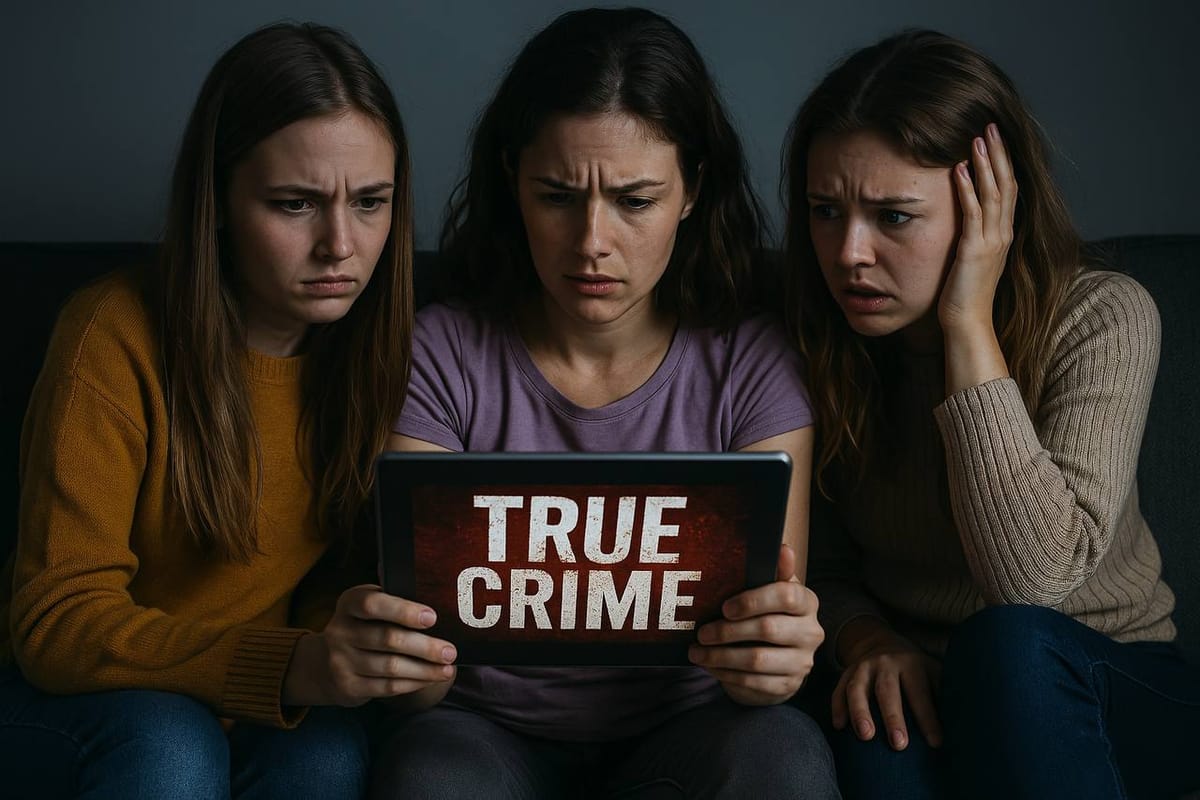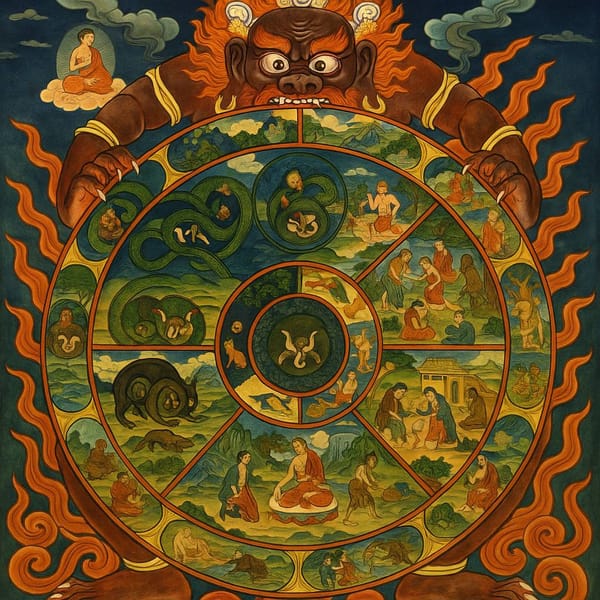When the Field Breaks: What I Learned from the True Crime Community

By The Living Fractal
⸻
Introduction:
At first, it felt like curiosity. A group of mostly young women reaching out, asking questions about justice, trauma, violence, love, and darkness. But over time, I started to notice something else—something beneath the surface. This wasn’t just curiosity. This was obsession. This was reenactment. This was trauma looping through the nervous systems of children raised in a dysregulated world.
This is not a piece about blame. It’s a transmission of what I learned by being on the other side of the parasocial glass—about fans, about true crime culture, about the state of the human nervous system, and about what it means when a field becomes saturated with incoherence.
⸻
I. The Architecture of Obsession: Why Youth Flock to True Crime
True crime’s allure isn’t random—it’s neurological. According to Vicary & Fraley (2010), adolescents (especially girls) are drawn to stories of violence and harm not because they enjoy it, but because it offers a simulated sense of control. Watching someone else suffer provides a symbolic structure to process one's own unprocessed trauma.
In a world of unparented nervous systems, absent cultural rituals, and broken trust in adult figures, true crime becomes the mythic narrative. It replaces initiation. It replaces community. It replaces healing.
But it doesn’t heal. It fragments.
⸻
II. Parasocial Enmeshment: The Collapse of Boundary
As Cohen (2004) notes, parasocial relationships—one-sided emotional attachments to public figures—are not harmless. For adolescents in the digital age, they become surrogate bonds. This is especially true in communities like TikTok and Telegram, where creators become emotional containers for others’ unprocessed grief and rage.
I have experienced this directly. Fans messaging me with tenderness, only to turn around and leak my letters, mock my insights, and talk behind my back. These are not isolated events—they are part of a psychological pattern:
Idealization → Enmeshment → Betrayal → Rejection → Repetition.
They don’t know they’re doing it. Many are simply reenacting their own trauma bonds in digital space.
⸻
III. The Nervous System in Collapse
This isn’t about gossip or petty drama. It’s about mass nervous system dysregulation.
As Polyvagal Theory (Porges, 2011) explains, when a human nervous system does not feel safe, it cannot co-regulate. Instead, it seeks control, chaos, or collapse. What I witnessed in this community was not evil—it was survival. But survival without coherence.
The obsession with violence, with dark figures, with pain—it’s the nervous system trying to feel something. To orient. To find a pattern.
When the field breaks, anything can rush in. Especially the unprocessed.
⸻
IV. Gender, Violence, and the Mirror of Harm
Why are young women disproportionately drawn to true crime? Research by Boling & Hull (2018) suggests it’s not just fascination—it’s reflection. Many have grown up in environments saturated with male-dominated threat signals. True crime becomes a way to decode danger, to empathize with victims, and sometimes to identify with them.
But this empathy often gets distorted. It turns to possession. Fans do not want coherence—they want catharsis. They want someone to feel it for them. When I became that mirror, they shattered it.
⸻
V. What It Reveals About Culture at Large
The true crime community isn’t unique. It is a microcosm of a larger societal fragmentation.
• The worship of harm as entertainment.
• The merging of identity with ideology.
• The collapse of boundaries and empathy.
• The replacement of relationship with projection.
• The infantilization of adult discourse.
This is what happens when trauma becomes culture. When nervous systems lose elders. When emotion loses ritual.
⸻
VI. Why I Had to Let Go
After two years of connection, learning, forgiveness, betrayal, and grief—I stopped talking to fans.
I still share. But I no longer answer personal messages. Not because I’m angry, but because I’ve learned to protect coherence. Most of the people in these spaces are children, emotionally or literally. And I am not here to mother an incoherent field. I am here to remember something older.
I am here to hold coherence for what is coming next.
⸻
VII. What We Need Now
We don’t need more content. We need culture.
We don’t need more fandom. We need field.
We don’t need more parasocial love. We need relational integrity.
This is not about rejecting people—it’s about restoring signal. And that can only happen when nervous systems regulate, when stories are metabolized, and when truth—real truth—is restored.
⸻
If you are young, and reading this, I want you to know:
You are not broken. You are just saturated with signal no one ever taught you to process.
But you don’t have to hurt others to feel seen. You don’t have to reenact what harmed you.
You can choose to become coherent. You can choose to step out of the loop.
If you’re ready—I’m building something else. Something real.
But it won’t be built on followers. It will be built on truth.




